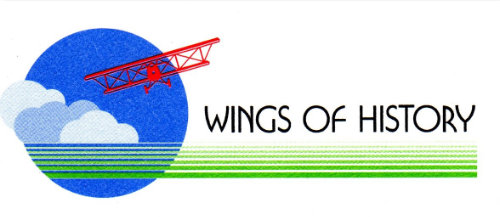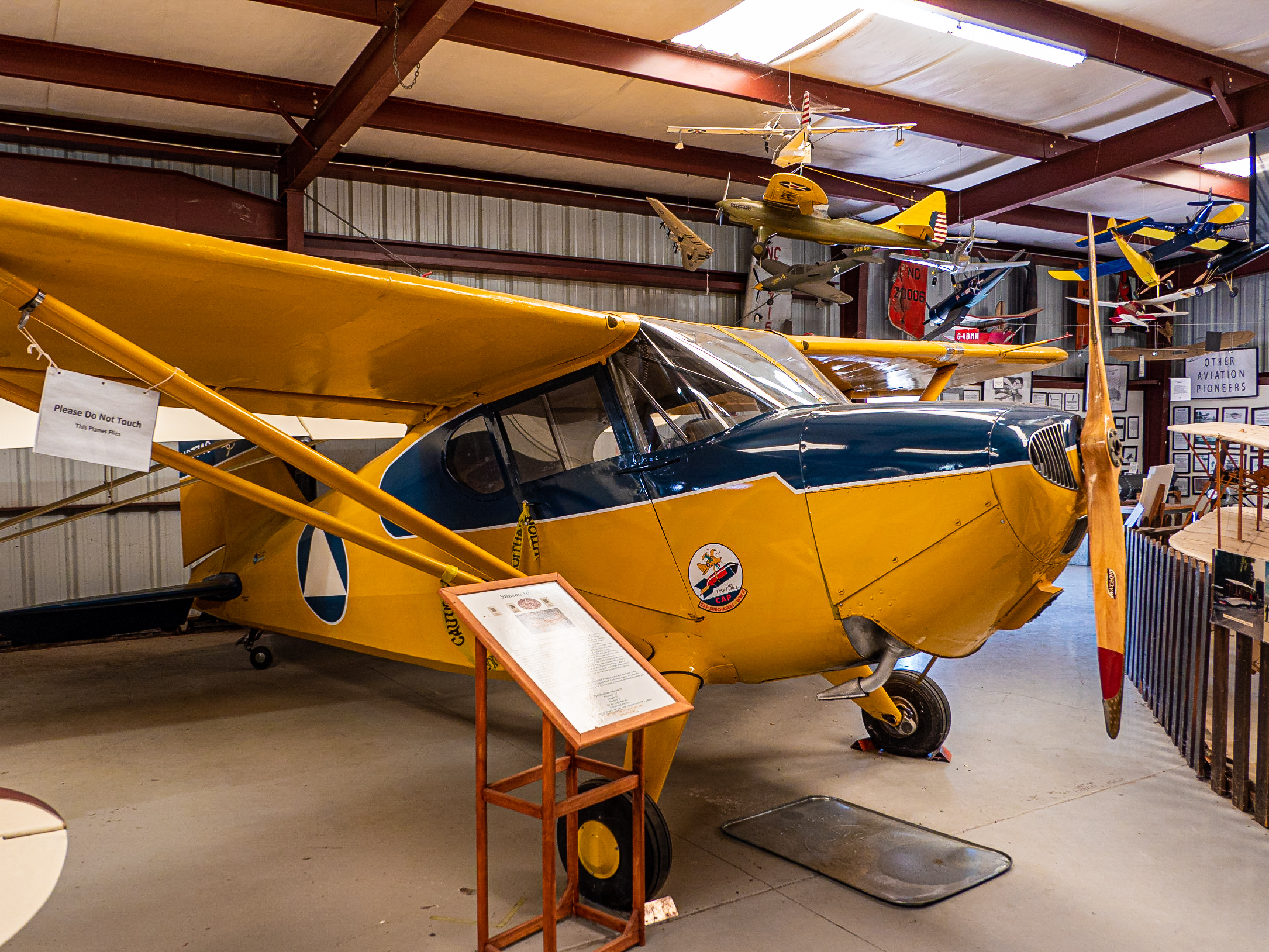As you view the two sides of the fuselage at about the mid-point between the wing and the tail you will notice a triangular symbol. This symbol represents the Civilian Air Patrol (CAP).
The reason this symbol appears on our museum Stinson is that a number of these aircraft were used to patrol the coastal waters of the eastern seaboard and the Gulf coastal area of the United States during the time period of March 1942 to August 1943.
German submarines began attacking shipping off our coastal waters early in 1942. As shipping losses increased, our government authorized the CAP to patrol these areas out of 21 bases along our coast. The CAP flew 86,865 missions for a total of 244,600 flight hours. At first, each mission consisted of a pilot and a radio operator/observer with no armament on the aircraft. When a hostile submarine was spotted the crew would radio the activity to their base whereupon either an army or navy aircraft would be dispatched to encounter the submarine. The patrols also conducted search and rescue missions for survivors of allied merchant ships that had been torpedoed by the Nazi submarines. During the eighteen months of operation, the CAP patrols spotted 173 U-boats, located 363 survivors of sunken ships, and reported 91 ships that were in distress.
In May 1942, a crew was flying a mission when they spotted a submarine just off of Cape Canaveral, Florida. In an attempt to escape the submarine ended up getting stuck in the mud and stayed stuck for forty-two minutes. The CAP airplane continued to circle the submarine, calling their base to send help to attack the submarine. Neither the army nor the navy could respond quickly enough and the submarine broke loose and escaped.
When news of the incident reached authorities the CAP was authorized to arm their airplanes with either a single 100-pound bomb or depth charges. To accomplish this the aircraft was modified for these munitions. A rack was added under the fuselage to carry the bomb and some aircraft had a rack installed just aft of the right-hand door near the bottom of the fuselage of the Stinson to hold the depth charges. Some of the historical writing states that two submarines were sunk by this armament, but those facts are a subject of dispute.
During the overall operation, the CAP lost 26 crew members and 90 airplanes. In the summer of 1943, the German submarines were pulled back from our coastal waters due to what is described as our increasingly effective anti-submarine tactics and what one German leader described after the war as “those pesky little yellow planes.”
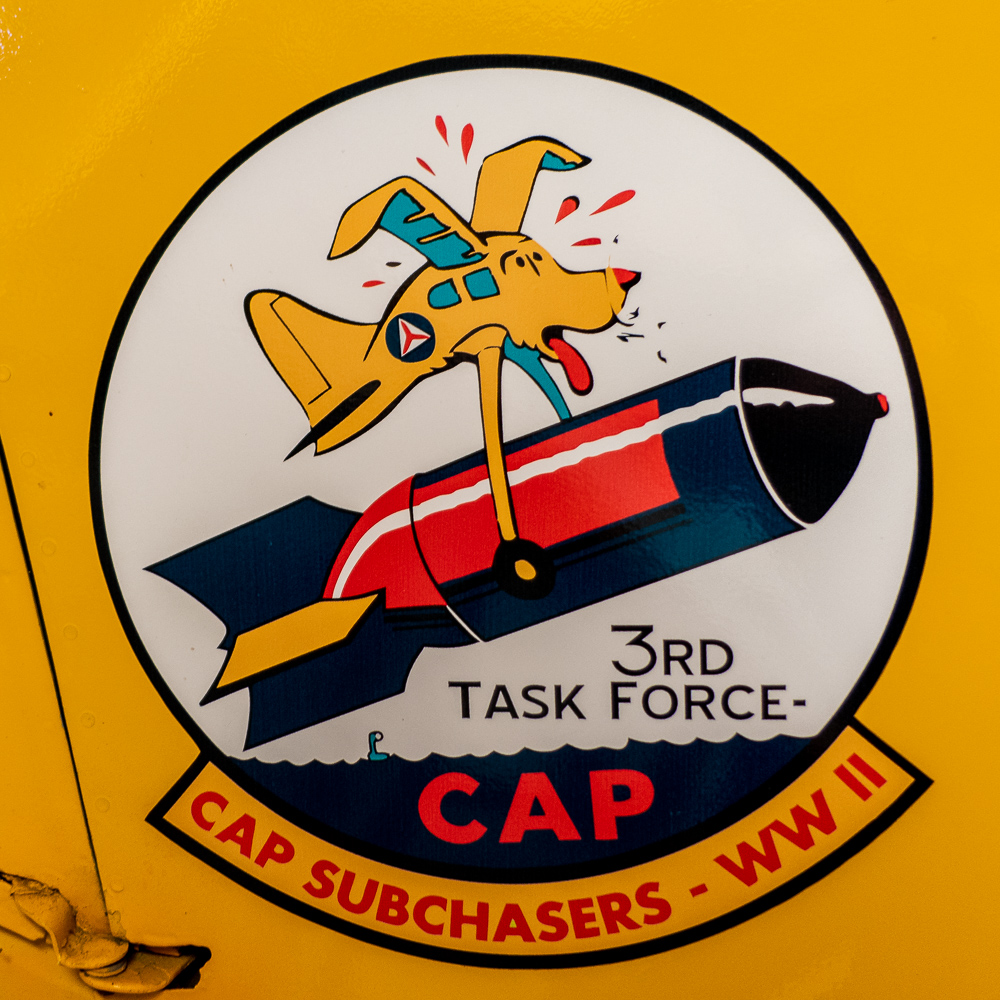
Note 100 pound Bomb or Depth charge
Each of the bases had its own identifying emblem on their aircraft and our museum aircraft proudly displays one of these on both the left and right-hand side of the fuselage just forward of the doors.
Stinson Fixed Wing Slots
As you look at the forward part (called the “leading edge”) of each wing you will notice that toward the wing tips there is an opening through the bottom of the wing that leads up to the top of the wing.
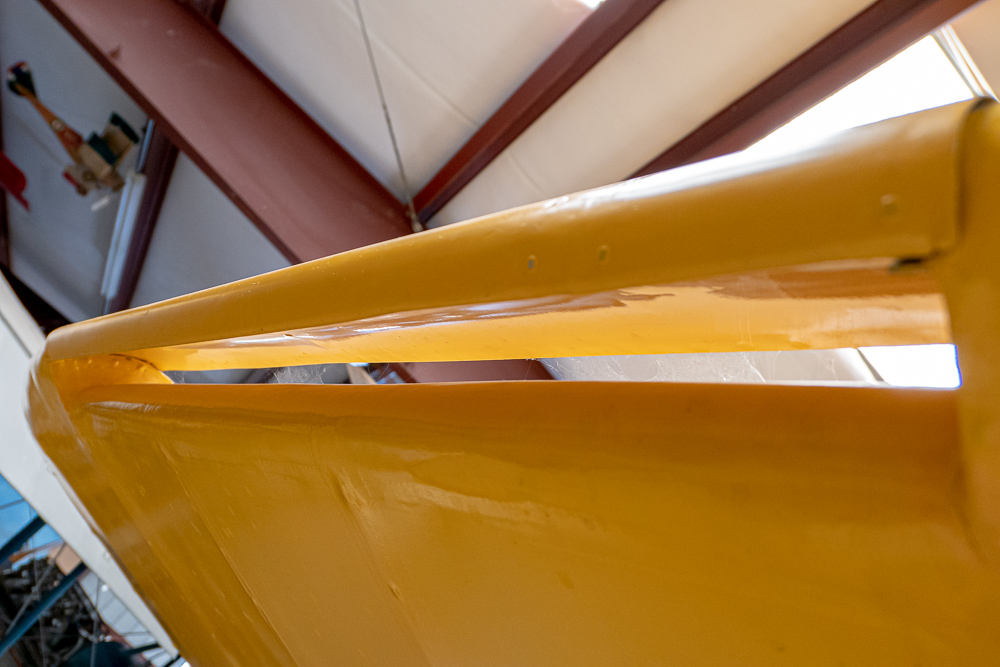
Stinson 10A wing slot (right wing leading edge)
This feature is called a “fixed leading edge slot. When a wing is moving through the air at an angle to the incoming air of about 15 degrees (varies with some airplanes) the airflow over the top of the wing does not flow smoothly and the amount of lift it is generating decreases rapidly. This event is known as a “wing stall” and the wing will no longer support the weight of the aircraft in flight.
By placing this design into the wing structure, the angle of the wing may now be increased to about 22 degrees or more before it stalls. This allows the airplane to fly at a much lower speed than it would if it did not have this device built into the wing.
You might also take note that on this airplane the slots are not the entire length of the wing and in particular are in front of, or in line with, the ailerons on the wing (along the back edge [trailing edge] of the wing). This means that the ailerons will maintain their effectiveness at a higher angle while the part of the wing closest to the cabin of the airplane is starting to stall. This action promotes good low speed handling characteristics of the airplane (no loss of control) when the airplane is approaching a stall. A slotted wing does have some disadvantages one of the greatest being that slots increase drag on the airplane resulting in an increase in fuel consumption per unit of distance flown.
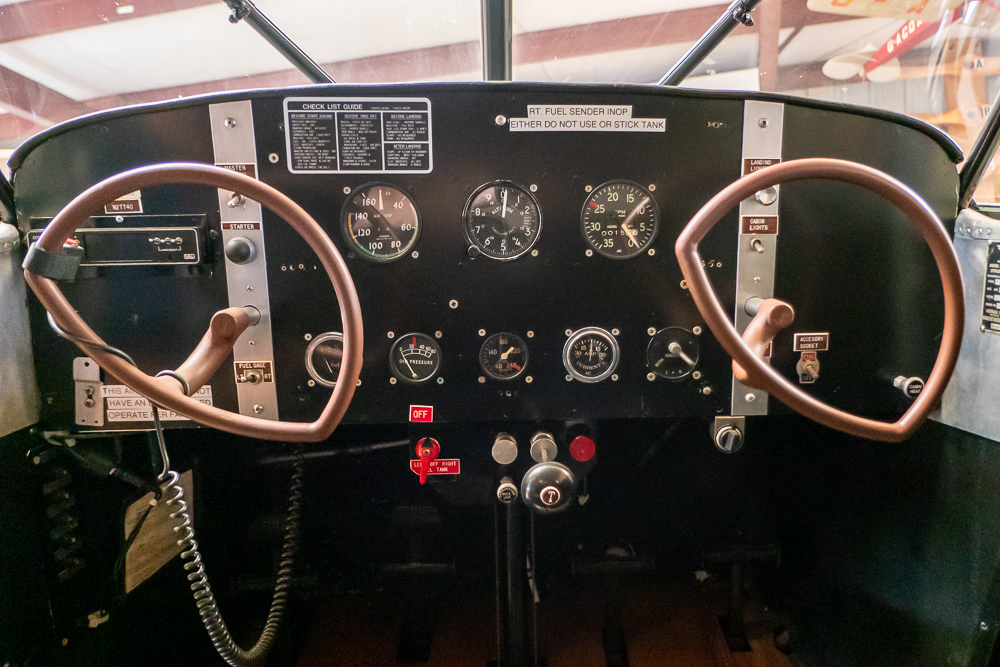
Stinson 10 Cockpit Instrument Panel
The following is a wonderful example of how donations from members and the public help fund Wings of History preservation projects.
This 1940 Stinson model 10 was donated to the Museum back in 1993 by Robert Hupp, and that was when the restoration started.
Over the years, many different volunteers contributed their time, money, and help. New vertical and horizontal stabilizers and elevators were hand re-made, recovered, and painted. In addition, cables, instrumentation, fuselage, fuel systems, engine overhaul, and many other details were finalized. All of this work was done under the watchful eye of our own FAA certified airframe and power plant mechanic. Credit for the Stinson project goes to many people including (in no particular order) Frank Nichols, Peter Talbot, Tom Slappendel, Vaughn Lamb, Todd Minier, Dan Petroff, Jerry Impellezzeri, Doug Rosskilly, and others not named (blame the author).
At last, it was time to test and retest the engine, control surfaces, instruments, fuel system, and taxi capability. After assurance that all was in order, the day came for the initial flight around the pattern. The outcome of these efforts resulted in some minor fixes and adjustments. Finally, it must be mentioned that getting all the paperwork done and the inspections signed off is a major task.
Our test pilot, Mark Guerrero, is in his early 30’s, a mechanical engineering graduate from San Jose State, and a CFI. Robin Reid has mentored him and he is the Museum’s chief test pilot. He has over 2,000 hrs taildragger time.
We have not yet totaled all costs for the restoration but it is safe to say the material amount is in the range of $4K to $6K and, of course, the time and effort value is incalculable. Skilled volunteers, of course, made our own wood propeller at our FAA certified prop shop
A small crew was assembled to help with the initial flights. This was done to keep interruptions down and maintain focus. A comment by one of the crew, Dan Petroff, best describes the event: “It was exciting to see the tail come up and the mains leave the ground with the engine purring smoothly. Mark handled the plane well and there were no squawks, which feels really good. We probably would not have done the second flight when we did except we couldn’t contain Robin Reid.”
